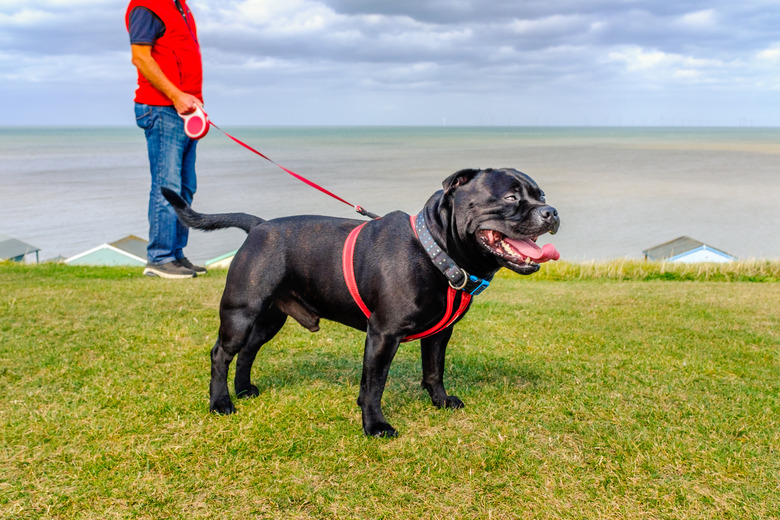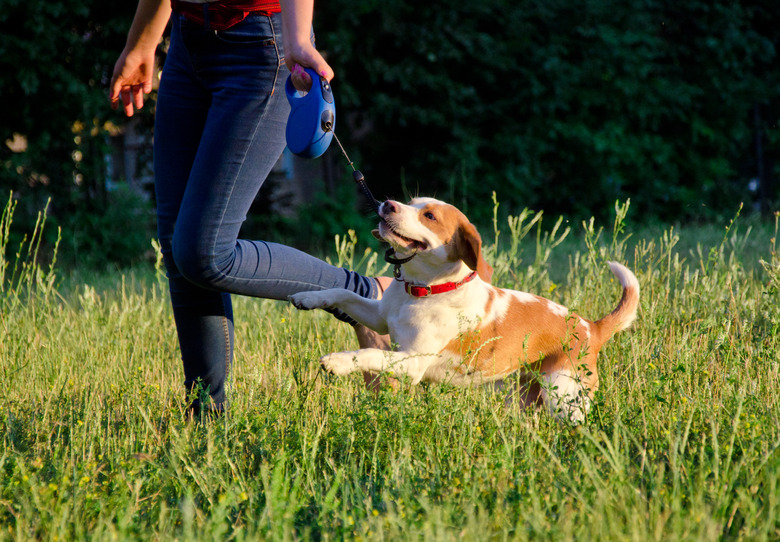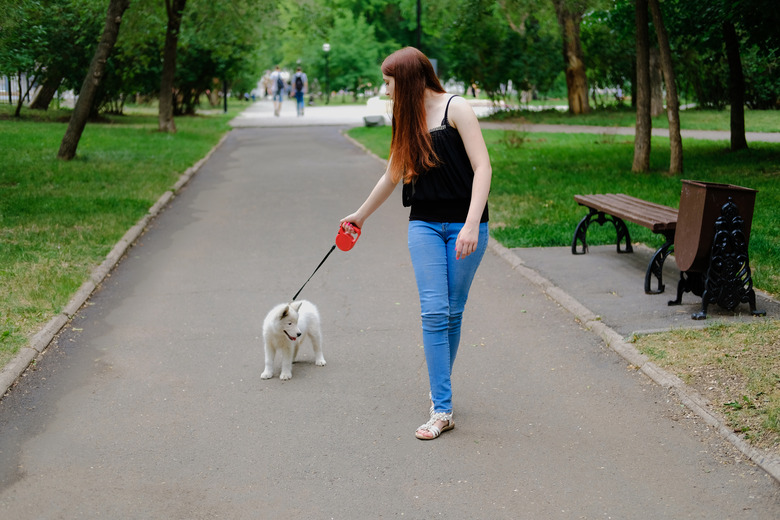Are Retractable Leashes Safe For Your Dog?
Poking around in the bushes, your leashed dog is exploring, sniffing every fragrant nook and cranny, and having the time of his life. Except he's more than 25 feet away from you. Consequently, he's overjoyed for the sense of freedom he feels, and you want him to enjoy himself, so you're happy, too.
But retractable leashes have significant downsides. Eschewed by many dog trainers and veterinarians for an assortment of compelling reasons, retractable leashes' good features are often outweighed by then negative outcomes of using them incorrectly, irresponsibly, or when the unexpected occurs.
Choose the right leash for you and your dog
Choose the right leash for you and your dog
From time immemorial, humans have used leashes with dogs, which helped people to domesticate them thousands of years ago. Katherine Grier, author of Pets in America: A History writes, "leashes are the oldest pieces of material culture to be associated with dogs."
What began as a simple way to connect the dog to the owner has not only become the norm, today it's mandated by law in most municipalities throughout America. So, of course, you want to put a leash on your dog whenever you're out and about in public. From training and socialization as a puppy to leisurely strolls through the park with your senior dog, a leash is one of the most important tools you'll ever use in your dog's lifetime.
But choosing the right leash for you and your dog is essential. Each style has its proponents and detractors, but none is as controversial as the retractable leash. Extolled by inventor Mary Delaney as a form of humane constraint, she imagined her invention offering owners increased control while their pups were permitted a degree of self-expression.
But if you're thinking a retractable leash is a good choice for you and your dog, you should also be well aware of its drawbacks before you purchase one.
What do people like about retractable leashes?
What do people like about retractable leashes?
The retractable leash has many fans—otherwise, it wouldn't be on the market. Freely allowed to explore their environment seemingly unencumbered, dogs love it. Dog owners like it because they like giving their dog some freedom, while they visualize themselves in control, still able to reel their dog in at will.
However, t when a dog reaches the end of that long, retractable leash, in reality, the person at the other end of the leash has less control than they think.
Reasons not to use retractable leashes
Reasons not to use retractable leashes
Countless situations may arise where a retractable leash puts you and your dog at risk. Here are a few good reasons to not use one:
- Even a walk around your own block can quickly turn dangerous if an unknown dog approaches your dog, or a truck comes barreling down the road out of nowhere, and your dog is at the end of her retractable leash and you cannot get her back quickly. Full-out, the long length allows your dog to run into the street, get tangled up with another dog, people, or an object because extended to its limit, the leash does not automatically retract. Now, in a panic, you have to lock to prevent your dog from getting farther away, release to retract, lock, release, lock, release — exceedingly difficult in an emergency situation. Retractable leashes actually don't retract when it's most crucial they do.
- Retractable leashes, like many retractable devices, often malfunction. The cord can break and your dog runs into danger or the cord snaps back at you, possibly causing injury, or it fails to extend or respool, or respools on its own.
- Fast-retracting leashes can cause eye injury, burn skin, cause deep lacerations, or injure dog or walker in other ways.
- A heavy dog at the end of a fully extended retractable leash can pull the owner down and drag him, causing "road rash," broken bones, and worse.
Is there an appropriate environment to use a retractable leash?
Is there an appropriate environment to use a retractable leash?
With all the good reasons not to use a retractable leash, you may wonder, is there an appropriate environment in which a retractable leash has the least negative consequences? If you have a large, park-like property, but it's not fenced, a retractable leash might be an option for this scenario. However, many trainers would recommend instead a long line, which is simply a long, strong leash, in this case. A long line has the benefits of a retractable leash (length and freedom), but does not have the associated risks, such as the backlash of a retracting cord.
However, you must be careful, and stay aware at all times, keeping in mind the good, but also, potentially, the bad and the ugly of the tool you hold in your hand. Alternatively, you might consider using a long, non-retracting 20- or even 30-foot leash, also known as a "check cord," like the ones used in tracking-dog exercises.
Always consider where you and your dog are walking, the potential hazards, and choose the best leash that will keep you both safe in that environment.
In summary
In summary
Although it was initially touted as a humane form of restraint, retractable leashes have many drawbacks, and are not safe to use in any environment where there are other dogs, people, or animals. If you're walking your dog in an environment such as a large unfenced property in the country, most trainers recommend a long line instead of a retractable leash. A long line can give your dog lots of freedom to explore, while still ensuring safety and a connection to you.


